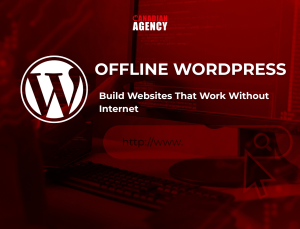In the ever-evolving digital ecosystem, maintaining a WordPress website is no longer just about publishing content or displaying products—it’s about resilience, adaptability, and forward-thinking architecture. Future-proofing a WordPress website means preparing it to handle upcoming challenges, whether related to user behavior shifts, emerging technologies, or stricter compliance and security protocols. As WordPress continues to be the world’s most widely used content management system, website owners and developers must prioritize sustainability, performance, and flexibility at every stage of the development lifecycle.
This blog explores how to future-proof your WordPress website by focusing on the essential building blocks—starting from hosting and theme selection to modular development, accessibility, and beyond.
Core WordPress Fundamentals
Before diving into the advanced strategies, it’s crucial to build on a solid understanding of WordPress core fundamentals. The platform operates on a robust combination of PHP, MySQL, and a modular system that empowers developers with extensibility through themes and plugins. A future-ready WordPress site must be developed in harmony with WordPress coding standards, best practices, and core update cycles.
Keeping the WordPress core updated ensures access to new features, performance improvements, and vital security patches. Developers must ensure compatibility between their custom code and the core structure to avoid conflicts during updates. A deep understanding of the WordPress loop, custom post types, taxonomies, hooks (actions and filters), and the REST API can empower developers to craft scalable solutions that integrate seamlessly into the WordPress ecosystem.
Choosing the Right Hosting and Setup
Hosting lays the foundation of your website’s reliability and scalability. To future-proof your website, selecting a reputable managed WordPress hosting provider is essential. These providers offer optimized environments tailored for WordPress, including built-in caching, CDN integrations, automated backups, and robust security layers.
Infrastructure scalability should also be a major consideration. Cloud-based hosting platforms like Amazon Web Services (AWS), Google Cloud, and DigitalOcean, when used with container-based architecture or headless WordPress setups, can offer horizontal scalability, dynamic load balancing, and flexible resource management, which are crucial for handling future growth.
Furthermore, using the latest versions of PHP and MySQL/MariaDB supported by WordPress enhances performance and ensures long-term compatibility with future releases of the CMS.
Selecting Reliable Themes and Plugins
Themes and plugins are the heart of WordPress customization, but they can also be sources of vulnerabilities and performance issues if not selected wisely. Future-proofing your site requires choosing themes and plugins that follow modern coding standards, receive regular updates, and maintain active support from their developers.
Rather than opting for feature-bloated multipurpose themes, lean towards lightweight, modular, and well-documented themes that separate presentation from functionality. When possible, avoid adding functionality through themes and instead rely on purpose-built plugins or custom development to maintain long-term portability.
Vet plugins based on active installs, update frequency, developer reputation, and compatibility with the latest WordPress core versions. Overreliance on third-party plugins, especially outdated or poorly maintained ones, can become a technical liability over time.
Implementing Scalable Design and Development
As user needs evolve and business goals shift, websites must be able to grow without necessitating a complete overhaul. Scalable development means architecting your website to accommodate new features, traffic surges, and content expansion with minimal technical debt.
Custom post types and taxonomies should be employed strategically to organize content efficiently. Reusable components and custom shortcodes or blocks (for Gutenberg) allow non-developers to manage content dynamically, ensuring maintainability. Where applicable, use custom fields through ACF (Advanced Custom Fields) or similar tools to create scalable, user-friendly content structures.
Implementing version control through Git and using staging environments ensures stable deployments and makes it easier to test features before pushing them live. These practices streamline development workflows and reduce downtime during future site updates.
Responsive and Adaptive Design Principles
Today’s users access websites from a variety of devices, including desktops, tablets, and smartphones. To remain relevant and effective, your WordPress site must utilize responsive design principles. This involves designing fluid layouts that adjust to different screen sizes using flexible grids, images, and media queries.
Adaptive design takes this further by delivering tailored experiences based on device capabilities or user contexts. For instance, loading lower-resolution assets for mobile users or hiding resource-heavy animations for slower connections improves usability and performance.
With the rise of new device types—such as foldables, smart TVs, and wearables—designers and developers should adopt a mobile-first approach and test their websites extensively across a wide array of screen types and resolutions.
Modular Development Practices
A modular architecture ensures that individual components of your WordPress site can be updated, replaced, or scaled independently. This is particularly important when custom functionality is added through theme development or plugin creation.
Breaking down functionality into discrete, reusable modules reduces code redundancy and makes your website easier to maintain. This approach aligns well with the concept of component-based design, as used in Gutenberg blocks or JavaScript frameworks like React.
Furthermore, leveraging object-oriented programming (OOP) principles in custom plugins, using namespaces, and adhering to MVC-like structures when applicable can lead to clean, decoupled codebases that are easier to refactor and test.
Security and Performance as Foundations
Future-proofing is incomplete without addressing security and performance as primary concerns rather than afterthoughts. Cyber threats continue to evolve, and websites that aren’t proactively secured are prime targets for malware, data breaches, and defacement.
Core security measures include enforcing SSL/TLS encryption, restricting admin access through IP whitelisting or 2FA, and routinely scanning for vulnerabilities. Employing a Web Application Firewall (WAF) and limiting the number of installed plugins reduces your attack surface.
Performance-wise, a fast-loading site contributes directly to better user experiences and improved SEO rankings. Optimize image sizes using next-gen formats like WebP, leverage browser caching, and use lazy loading to reduce initial page loads. Deploying a CDN ensures content is served quickly from the closest edge server, reducing latency.
Staying Ahead of Security Threats
Security is not a one-time setup—it’s an ongoing commitment. Future-proofing your site involves continuously monitoring and responding to new threats. Staying subscribed to vulnerability databases like WPScan and following security blogs can help developers stay informed.
Automated backups and quick restore mechanisms can reduce recovery time in case of compromise. Implementing audit logs to track user activity, especially on multisite or membership sites, provides visibility into potential malicious actions or misconfigurations.
Developers should follow the principle of least privilege, especially when assigning roles and capabilities to users. Regular penetration testing and code reviews further help uncover blind spots before attackers do.
Performance Optimization Techniques
Speed is a key ranking factor and an essential part of user experience. Future-ready WordPress websites are built with performance in mind from the ground up. This includes optimizing databases, minifying CSS and JavaScript files, and reducing the number of HTTP requests per page.
Server-side caching through tools like Redis or object caching plugins (such as W3 Total Cache or WP Rocket) enhances dynamic content delivery. Additionally, consider implementing server push or preloading techniques for critical resources.
Database optimization should also be scheduled regularly to remove overhead and stale transients, especially on high-traffic or content-heavy sites. Using query monitors during development can help detect inefficient queries and prevent performance bottlenecks early.
Preparing for the Evolving Digital Landscape
The digital space is continuously shifting, with AI integration, voice search, and headless CMS architecture taking center stage. Future-proofing means building a site that can adapt to these innovations without structural overhauls.
WordPress REST API enables seamless integrations with front-end frameworks like React, Vue, or Svelte. This decoupled (headless) approach allows for omnichannel publishing across websites, apps, and IoT devices. Voice-search optimization through schema.org markup and clean semantic HTML enhances discoverability on emerging platforms like Google Assistant or Alexa.
It’s also wise to implement structured data (rich snippets) for content such as FAQs, reviews, and product listings to keep up with evolving SEO algorithms and AI-driven search features.
Integrating Emerging Technologies
Artificial intelligence, augmented reality, chatbots, and real-time data handling are no longer futuristic concepts—they’re becoming standard features in modern web experiences. WordPress websites that integrate these technologies are more likely to stay ahead of the curve.
For instance, integrating AI-driven search and content recommendations can enhance user engagement. Real-time features like live chat support or inventory updates via WebSockets or AJAX can improve interactivity.
Developers should stay updated with relevant APIs, frameworks, and third-party services to integrate such tools smoothly without compromising core functionality.
Accessibility and Compliance
As global digital regulations tighten and user expectations grow, accessibility is no longer optional—it’s essential. A future-proof WordPress site must comply with standards like WCAG 2.1 to be usable by everyone, including those with disabilities.
Semantic HTML5, appropriate use of ARIA roles, keyboard navigation support, and sufficient color contrast are some basic principles to follow. WordPress provides tools like the Accessibility Ready tag for themes, but true compliance comes from rigorous testing using tools like WAVE, Axe, or manual screen reader audits.
Legal compliance such as GDPR, CCPA, and cookie consent must also be baked into the website’s data-handling processes, including proper data retention policies, opt-ins, and consent tracking.
Conclusion
Future-proofing your WordPress website isn’t about predicting the future—it’s about preparing for change. By adhering to modern development practices, focusing on performance and security, integrating scalable architecture, and staying compliant with emerging standards, your website will not only endure—it will thrive.
A future-ready WordPress site is adaptable, resilient, and capable of delivering exceptional user experiences regardless of how the digital world evolves. Whether you’re building a new project or revamping an existing one, investing in these strategies today will yield lasting dividends tomorrow.




